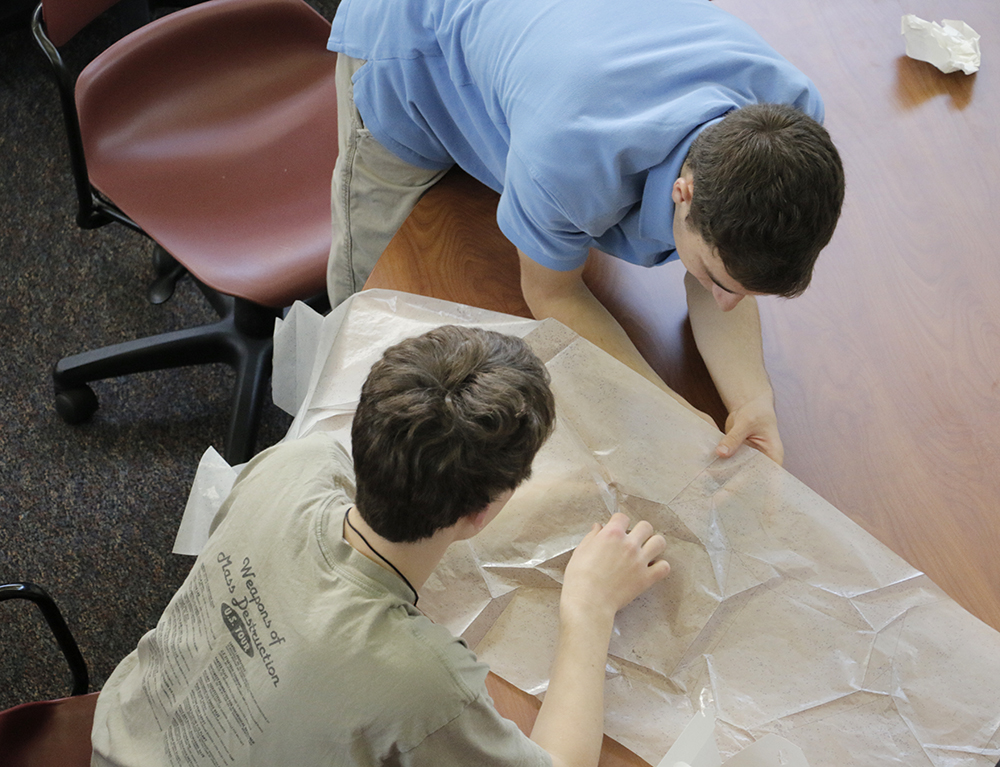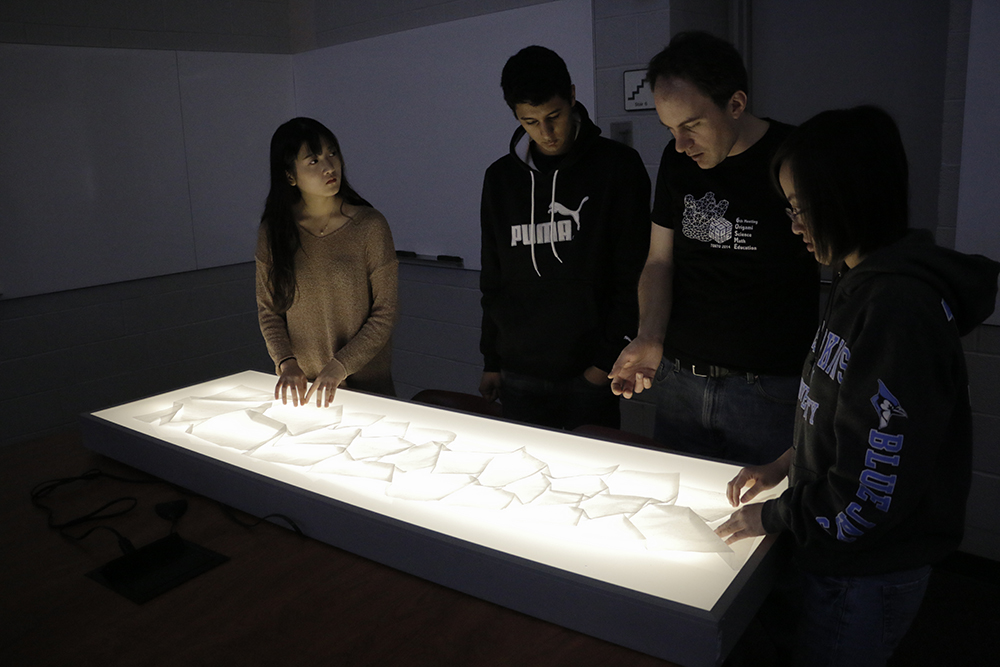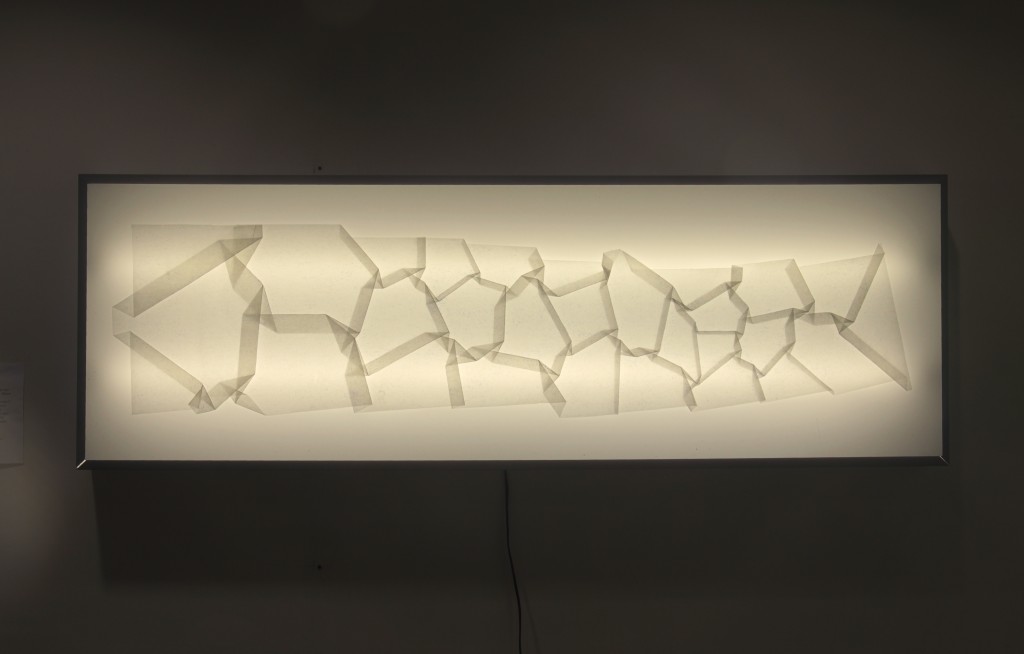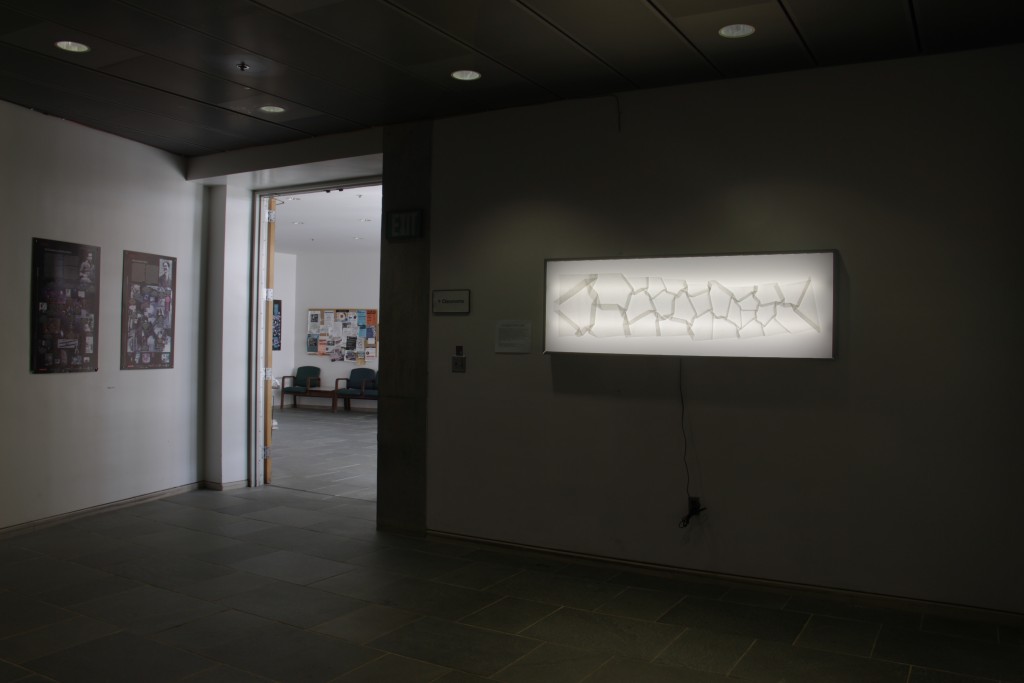Origami Cosmic Web
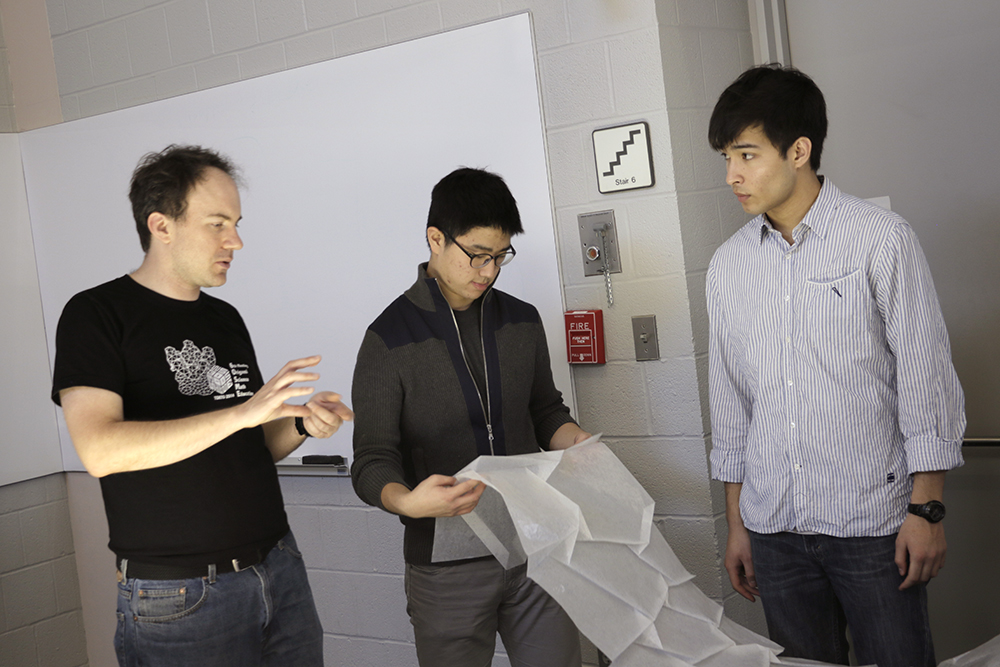
In the current, observationally successful picture of how the Universe developed, there is an origami analogy that is helpful in understanding the formation of the “cosmic web” arrangement of galaxies. The cosmic web is the cellular, foam-like arrangement of galaxies in the Universe; they line the edges of vast voids. This web, or VIPERS field (a map of galaxy locations spanning a vast distance) is the subject of a unique origami model by Mark Neyrinck, professor in the JHU Physics and Astronomy department. Neyrinkck led an intersession class in January 2015 focusing on the overlap of origami and astronomy, and built numerous models depicting these complex fields of space.
The models were fabricated at the DMC, using a large-format inkjet printer to print folding lines and galactic data onto glassine paper.
For more information on Neyrinck’s work, see his article on the Huffington Post.
